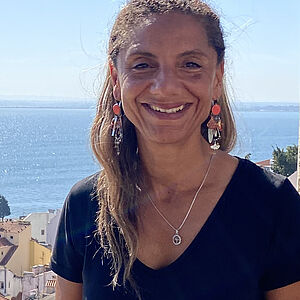
Yvonne Delevoye
Axes de recherche
La parfum de l'effort
Lorsqu'ils se sentent tristes, les individus ne perçoivent pas le monde de la même manière que lorsqu'ils sont heureux. La perception que les gens ont du monde et du temps qui passe est modulée par leur état affectif en raison de son effet sur la tension musculaire et l'éveil physiologique.
Dans mes travaux, j'adopte l'approche incarnée de la psychologie cognitive pour mieux comprendre comment les attitudes à l'égard de l'effort sont associées à des réponses affectives (aimer ou ne pas aimer) et modulent l'intention d'agir. Les protocoles sont issus de la psychologie expérimentale.
Nous utilisons des équipements de quantification du comportement humain : caméras 3D, pupillométrie, capteurs physiologiques, imagerie cérébrale, cinétique du mouvement. Cette approche permet de modéliser les effets des environnements augmentés sur les réactions humaines. Nous pouvons ainsi déterminer les principes sensoriels permettant de créer l'illusion d'un temps fluctuant pour faire émerger le goût de l'effort.
Les odeurs sont utilisées pour influencer la dynamique attentionnelle, les états d'éveil corporel et cérébral. L'objectif à terme est de trouver le dosage parfumé idéal permettant de favoriser l'émergence d'un plaisir pendant l'effort.
Axe 1 : Des palettes odorantes. L'odeur du pain chaud me fait me lever et marcher bien plus que mon médecin qui me dit d'effectuer 10 000 pas par jour... Les méthodes expérimentales sont utilisées pour sélectionner des palettes d'odeurs en fonction des niveaux d’éveil, de tension et de valence (négative ou positive) engendrés. Nous testons la stabilité des ressentis lorsque les odeurs sont libérées dans des environnements humides et à température variable.
Axe 2 : Posture et cinématique 3D. Tester expérimentalement le codage prédictif des comportements moteurs émotionnels est difficile lorsqu'on applique les paradigmes psychologiques classiques. En effet, mesurer indépendamment les temps de réaction, les mouvements oculaires ou la posture corporelle ne suffit pas à modéliser l'expérience affective d'une personne. Les questionnaires ne peuvent pas, à eux seuls, objectiver une expérience émotionnelle. Il est donc nécessaire d'innover. Le changement de paradigme que je propose est celui offert par les sciences cognitives qui appliquent des outils de clustering et des modèles de deep learning aux données comportementales et cérébrales.
Axe 3 : Imagerie cérébrale avec la technologie fNIRS. Les gens sont capables de modifier le rythme spontané de leurs actions pour interagir avec leur environnement et avec les autres. Cette capacité est sous-tendue par des fonctions cognitives de haut niveau, mais on ne sait que peu de choses sur les zones du cerveau et les efforts impliqués dans ce contrôle temporel. Un problème important est que les techniques actuelles de neuro-imagerie (par exemple, EEG, IRMf) sont extrêmement sensibles au mouvement, ce qui rend difficile toute étude de l'activité cérébrale dans le domaine des paradigmes moteurs du corps entier. Nous développons l'utilisation du système fNIRS à ondes continues pour enregistrer les réponses hémodynamiques préfrontales et motrices pour rendre compte d'activités cérébrales contrastées lorsque des adultes sains effectuent des tâches motrices ou cognitives, de complexité variable et à des rythmes différents.



